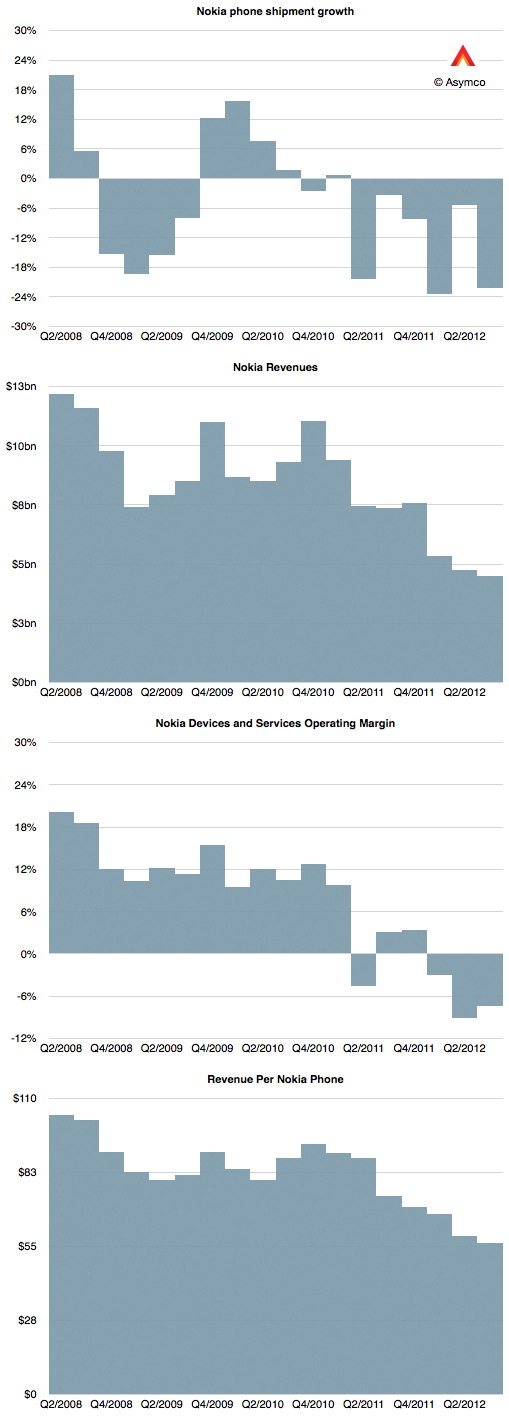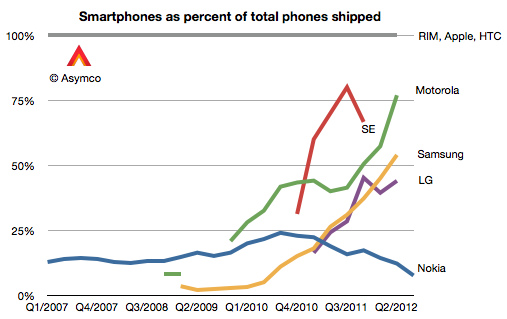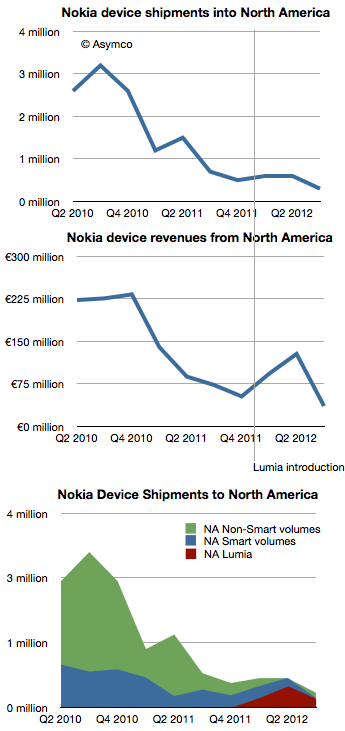Last July I asked the question “How many Lumia phones were shipped in the US?”
My answer was 630k through the first half of this year.
I revisit this question following Nokia’s latest quarterly report.
As a quick review, Nokia reported the following performance for its mobile phones operations:
The most worrying thing of all however is that Nokia’s smartphone performance has collapsed. With only 6.3 million units shipped, the company may be the worst performer among eight competitors I track. They were below RIM’s shipment total.
The value of 6.3 represents only 7.6% of their overall phone shipments.
As the graph above shows, Nokia is going in the wrong direction with respect to moving to a smartphone portfolio.[1]
Of the total 6.3 million smartphones (aka smart devices, as per Nokia’s reporting nomenclature) 2.9 million were Lumia Windows Phone units.
Using information about average selling prices and total volumes into North America, I was able to estimate that there were about 180,000 units sold into North America during the last quarter.
Since launch, my estimate is that Lumia has sold 810k units in the North American market.
This cannot be seen as a good performance. There are mitigating factors such as the lack of upgradeability to Windows Phone 8 which probably deflated demand[2]. However, it’s a poignant observation that during the last quarter the US reached 50% smartphone penetration by users. As traction is still absent from both Nokia and Microsoft in the US market, we are back to the question of how to compete.
As the market in the US transitions from competition against non-consumption to competition among rival platforms, the Lumia brand is being forced into targeting smartphone “switchers” rather than smartphone “adopters”. The switching option is expensive, requiring aggressive advertising (see Samsung Electronics’ $11 billion ad budget).
There’s only one source of cash for that sort of strategy.
—
Notes:
- The caveat is that they market some of the Series 40 phones are “smartphones” on the basis of having “smartphone-equivalent” performance. However, smartphone equivalency is and has been purely subjective. On that basis there were many times in the last decade and a half that we could have counted Java-based or BREW-based or i-Mode-based phones “smartphone-like”. Smartphone has been defined on the basis of running an operating system with native APIs for developers.
- I imagine that the upgrade path could have been known to Nokia, AT&T and Microsoft nine months ago when the Lumia was unveiled for the US by the three CEOs and therefore expectations could have been modulated accordingly.
Discover more from Asymco
Subscribe to get the latest posts sent to your email.



